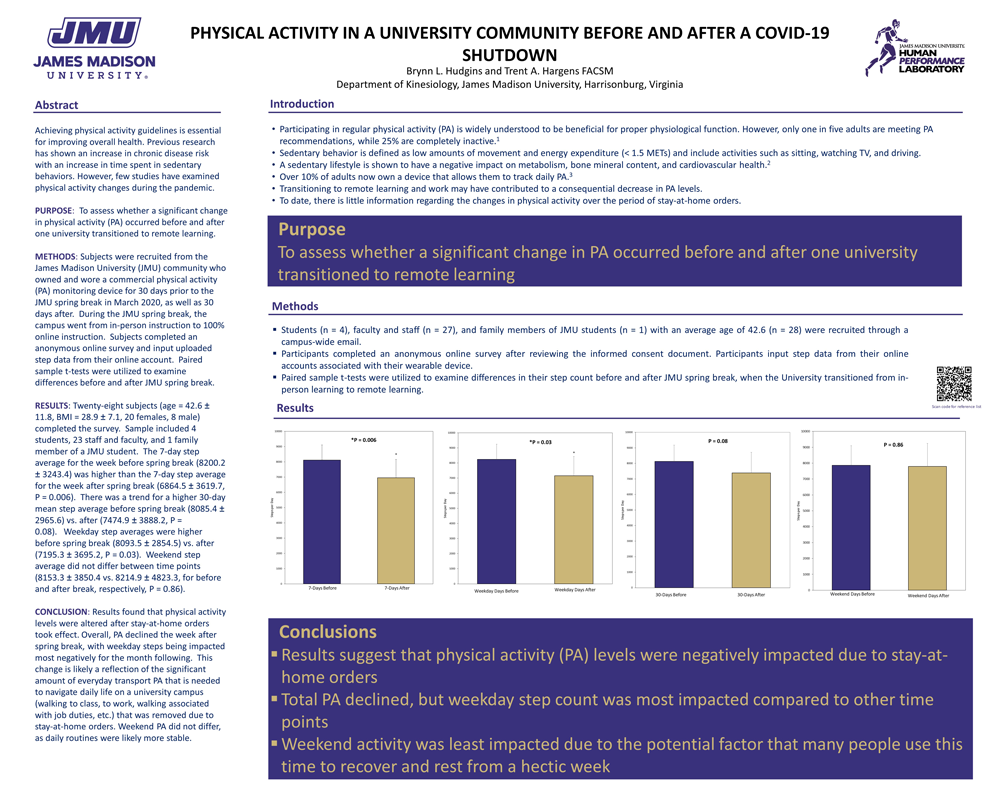Physical Activity in a University Community Before and After a COVID-19 Shutdown
Kinesiology
Achieving physical activity (PA) guidelines is essential for improving health and reducing chronic disease risk. However, few studies have examined PA changes during the pandemic. The purpose of this study was to assess whether a significant change in PA occurred before and after one university transitioned to remote learning. Subjects were recruited from the James Madison University (JMU) community who owned and wore a commercial PA monitoring device for 30 days prior to the JMU spring break in March 2020, as well as 30 days after the online transition occurred. Subjects completed an anonymous online survey and input uploaded step data from their online account. Twenty-eight subjects (age = 42.6 ± 11.8, BMI = 28.9 ± 7.1, 20 females, 8 male), including 4 students, 23 staff and faculty, and 1 family member of a JMU student completed the survey. The 7-day step average for the week before spring break (8200.2 ± 3243.4) was higher than the 7-day step average for the week after spring break (6864.5 ± 3619.7, P = 0.006). There was a trend for a higher 30-day mean step average before spring break (8085.4 ± 2965.6) vs. after (7474.9 ± 3888.2, P = 0.08). Weekday step averages were higher before spring break (8093.5 ± 2854.5) vs. after (7195.3 ± 3695.2, P = 0.03). Weekend step average did not differ between time points (8153.3 ± 3850.4 vs. 8214.9 ± 4823.3, for before and after break, respectively, P = 0.86). Results found that PA levels were altered after stay-at-home orders took effect. Overall, PA declined the week after spring break, with weekday steps being impacted most negatively. This change is likely a reflection of the significant amount of everyday transport PA that is needed to navigate daily life on a university campus that was removed due to restrictions.

